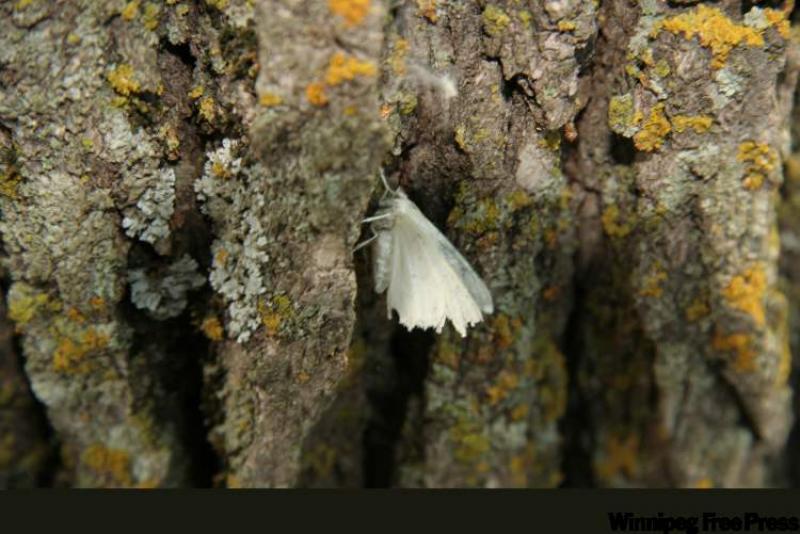

Users of Tanglefoot tree bands are understandably perplexed when they still get heavy feeding by cankerworms.
One explanation may be that they don't have cankerworms at all. Elm spanworms cause similar feeding damage to cankerworms and are not prevented from getting into trees by Tanglefoot bands.
The spanworm, a type of caterpillar, is larger than the cankerworm and usually varies from a mottled, yellowish grey-brown to black in colour, although I have only seen the darker-coloured worms in the Winnipeg area in recent years. The head and rear parts are a distinct reddish brown in colour. Cankerworms can be green or black in colour.
Spanworms are often two or three times larger than cankerworms. The "worm" is actually called a larva, and it is only one stage in the development of this insect. After about four weeks of feeding on leaves it will undergo a physical change and become a pupa resting in a net-like cocoon that it spins. Later in summer the pupa changes into a snowy white moth.
I have seen these spanworm moths gather in large numbers on the bark of oak trees. The female moths usually lay their eggs on the underside of twigs and in deep crevices of tree bark. The eggs hatch the following spring to become the familiar spanworm larvae.
Although they are called elm spanworms, they do feed on other tree species, especially oak, maple and ash. They also are somewhat common on fruit trees.
Unlike cankerworm moths, both the female and male spanworm moths fly, so they would not be trapped by sticky Tanglefoot bands. On occasion, it's possible to see both cankerworms and elm spanworms feeding on the same tree.
Elm spanworms are best controlled while they are young by a biological pesticide spray such as BtK (eg. Dipel).
There's another possible reason why cankerworms are feeding on trees that have been banded. If your neighbours' trees or nearby boulevard trees have not been Tanglefoot-banded, the cankerworms can crawl from those tree branches that touch your tree branches. More commonly, cankerworms attached to the end of their long threads can swing into your trees when it's windy and simply start feeding once they land.
Michael Allen is a consulting urban forester and certified I.S.A. arborist and owner of Viburnum Tree Experts. He makes house and garden visits to assess tree and shrub problems. He can be contacted by calling 831-6503 or by e-mail at viburnumtrees@shaw.ca You can also mail questions to Michael Allen, c/o Newsroom, Winnipeg Free Press, 1355 Mountain Ave., Winnipeg, MB, R2X 3B6. His web site is www.treeexperts.mb.ca



